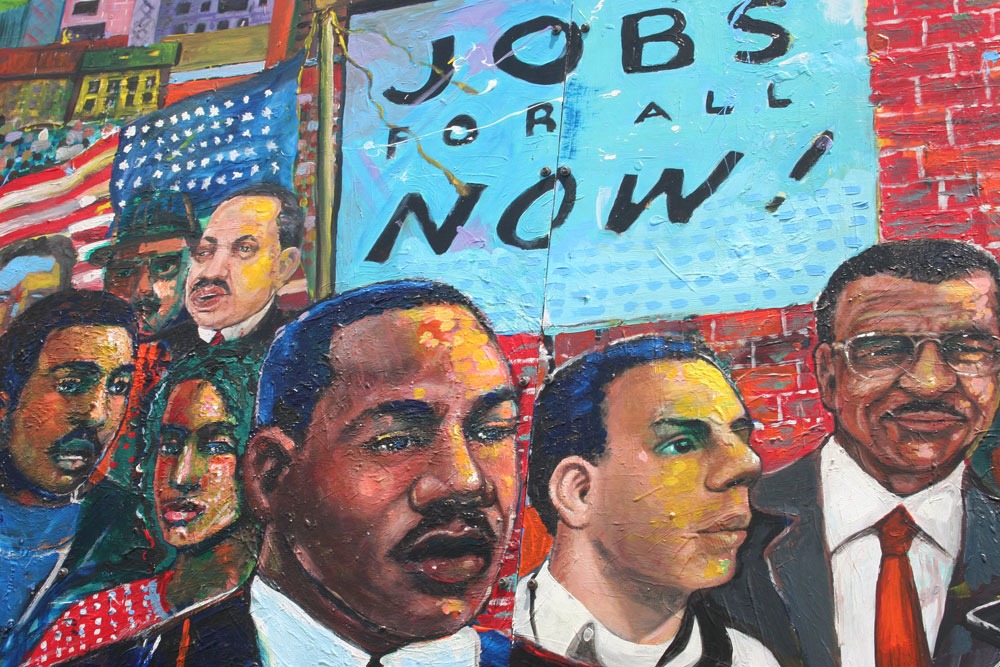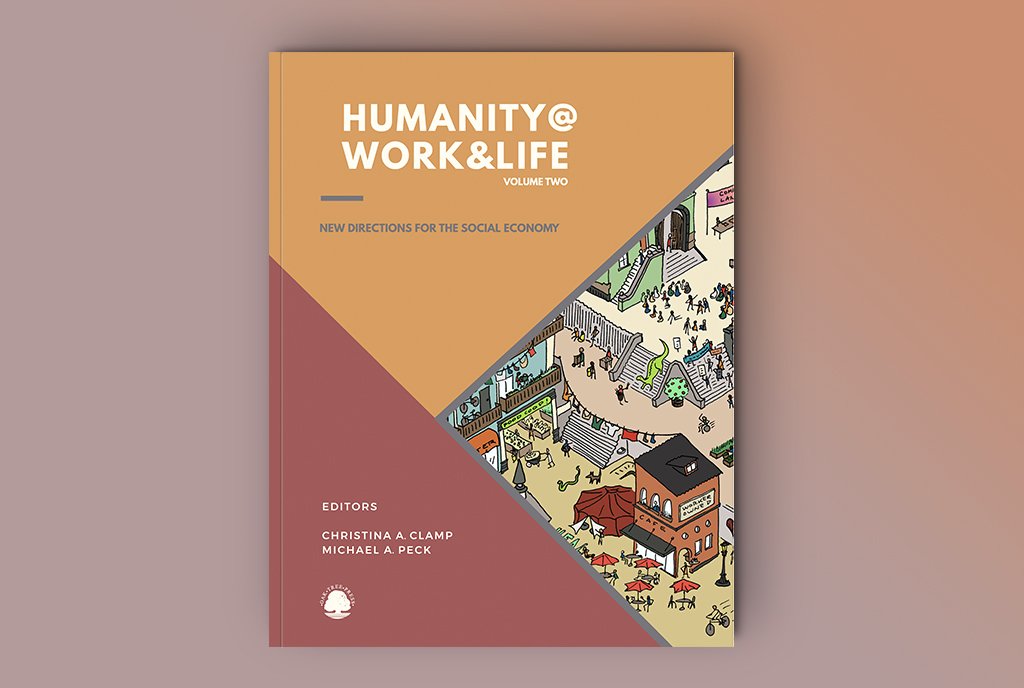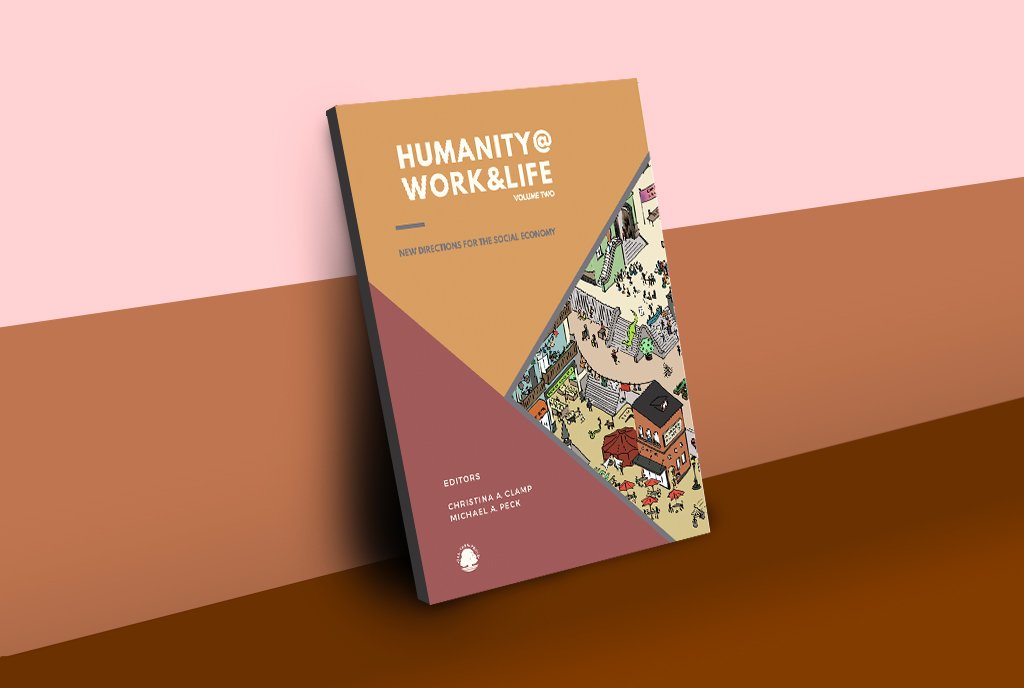

In June, David Leonhardt in the New York Times noted that “the black-white wage gap is roughly as large today as it was in 1950.” One driver of this is that a huge number—a third of Black men ages 25-54—remain outside the formal labor force. But, bottom line, in 1950, the average working-age Black man earned 51 cents on the dollar to what a white male worker earned. In 2014, the ratio was exactly the same.
That’s astonishing, even if the wage gap’s persistence is well known. The nation also has a widening racial wealth gap. If current trends continue, the median wealth of a Black family will be zero by 2053—with Latinx family median wealth also zero by 2073.
But the popular story is different. We all recall the 1960s civil rights movement and key victories like the Voting Rights Act and the Fair Housing Act. There are also symbolic political markers, such as the presidency of Barack Obama. But it extends beyond Obama. Look at mayors, for example. The first elections of Black mayors in cities of over 100,000 people took place in Cleveland, Ohio, and Gary, Indiana, back in 1967. Today, reports the City Mayors Association, “More than one third of America’s top-100 cities are governed by African Americans, with many mayors being women.” One can also point to cultural markers, with people of color increasingly visible in the arts, sports, Hollywood, and universities.
Of course, the persistence of structural racism is obvious, but the dominant image remains one of progress. Obama contributed to this narrative. For instance, at his victory address at Grant Park in Chicago in November 2008, he recalled “the buses in Montgomery, the hoses in Birmingham, a bridge in Selma, and a preacher from Atlanta who told a people that ‘We Shall Overcome.’ Yes, we can.”
And yet, especially in the economy, the reality is, “No, we haven’t.”
Yes, racial gaps are narrowing in some industries, such as television, but for the economy as a whole, the picture is quite the opposite. Embedded structural racism and white supremacy are leading contributors to this. However, this outcome depends on the effects of race, gender, and class interacting with each other.
In the US, although white discourse around racial justice is far from adequate, most acknowledge that structural racism and white supremacy exist and, if we wish to dismantle racism, then government, corporations, and nonprofits must act to do so.
Our understanding of class is far less sophisticated. As Richard Reeves wrote in a blog post for the Brookings Institution not so many years ago, “The United States imagines itself as a classless society.” This, in a society where the top one percent have more wealth than the bottom 95 percent of the population combined. And the consequences of class inequality have never been made clearer than amid the pandemic. As Fareed Zakaria observed in a Washington Post op-ed, “The COVID-19 divide is a class divide.”
Class inequality in the US is hidden in part by ritual acts, such as compelling our politicians to engage in faux “everyman” poses, as Reeves puts it. Elite efforts to maintain the invisibility of class divisions have a long history. Back in 1940, James Conant, president of Harvard at the time, addressed an audience at the University of California. Speaking during the Great Depression, Conant remarked, “Until fairly recently it was taken for granted that the American republic could be described as classless.” Conant titled his speech, “Education for a Classless Society.”
The myth dies hard.
If we look beneath the myth, what do we see? Not only do we see the persistence of class divides, but also changes over time—and the differential impacts that result when considered intersectionality alongside structural racism and patriarchy.
When one looks at class in this way, the shift in racial and gender composition of the working class also becomes clearly identified. While popular images of “working class” Americans still often focus on white male factory workers, most working-class Americans work at service jobs. Nearly half of “working class Americans” under the age of 35 are now people of color, and nearly half are women.
This past June, William Lazonick, Philip Moss, and Joshua Weitz examined how class and race intersect in a paper titled “How the Disappearance of Unionized Jobs Obliterated an Emergent Black Middle Class,” published by the Institute for New Economic Thinking. In July, they published a related paper called “Employment and Earnings of African Americans Fifty Years After: Progress?” Both draw on research conducted for a forthcoming book on Black workers over the past half-century.
In their paper on union jobs, the authors trace the evolution of the US economy from an “old” to “new” economic business model—and the shift from a manufacturing economy to a service economy. Lazonick and his colleagues emphasize how shifts in class formation worsened existing racial inequality.
Here’s one mechanism of how this occurs: Back in the mid-20th century US, many (white, male, professional) workers stayed at one job for their entire career. There were entire books written about this phenomenon, such as William Whyte’s The Organization Man. Corporate culture could be stultifying, but the “lifetime career” model definitely provided economic security. Unionized workers at large companies did not enjoy all of the economic privileges and benefits of white-collar professionals, but manufacturing businesses often provided de facto lifetime employment as well.
It is not exactly a secret that women and people of color were largely locked out of these opportunities. But if those barriers could be knocked down…once you were in, you were in—often for life, if you performed well and desired to stay at the company.
Sign up for our free newsletters
Subscribe to NPQ's newsletters to have our top stories delivered directly to your inbox.
By signing up, you agree to our privacy policy and terms of use, and to receive messages from NPQ and our partners.
The civil rights movement helped open those doors. As Lazonick and his colleagues explain, in the 1960s, “there was a movement of hundreds of thousands of Blacks into middle-class blue-collar work in unionized mass-production industries as they gained access to semi-skilled employment from which they had previously been largely excluded. Given union-bargained wages, seniority, and benefits, these semi-skilled unionized jobs were distinctly middle-class employment opportunities, even if at the lower end of that broad socioeconomic category.”
But then the economic structure changed. Not only did unions get weaker and manufacturing jobs disappear—as NPQ noted a couple years ago, the percentage of workers unionized in the US private sector has fallen from 35.4 percent in 1945 to 6.2 percent today—but the structure of employment also changed. Instead of an economy where “if you got in, you were in,” we now have an economy in which if you surmount racial and gender barriers once, you have succeeded only once.
A simple mathematical model can illustrate why greater volatility and instability increases the impact of racism. Imagine two societies—we’ll call them A and B.
-
Society A: A person who is Black is 50 percent less likely to get a “middle-class job” than a person who is white, but once hired, keeps that job for 25 years.
-
Society B: A person who is Black is 20 percent less likely to get a “middle-class job” than a person who is white, but once hired, each job only lasts five years and, with each transition, there is a 20 percent chance of falling off the “middle class” path.
Question: What is the chance a Black worker in year 25 has a middle-class job?
In Society A, the answer is easy: 50 percent. In Society B, 80 percent get in, but every five years there is a 20 percent chance of falling out of the middle class. After 25 years and four job transitions, only 41 percent still are in middle-class jobs.
Of course, this is a simplistic model and obviously ignores the chance of moving back into a middle-class job after year one. But what Lazonick and his colleagues find in the US reflects that some of the dynamics above have been at work.
Here are three of their key points:
- “From the late 1970s, unionized semi-skilled blue-collar employment entered into a long-run decline in the United States, with Blacks, having been last hired, generally being the first to lose these middle-class jobs.”
- “In the 1980s, at just the time when blue-collar Black families should have been positioned to make use of low-cost public higher education as a foundation for intergenerational upward mobility, the public commitment to low-cost higher education eroded.”
- When the economic structure shifted, “white males continued to dominate as they built new types of social networks in educational institutions, industrial sectors, professional associations, and industrial regions to facilitate the interorganizational mobility needed to build and sustain careers.”
Among the benefits for white male workers of their social networks (often backed by greater family wealth and lower student debt) was their ability to take calculated risks in the restructured economy. As Lazonick and his colleagues point out, many in the tech industry—in the 1980s and 1990s in particular—voluntarily accepted lower salaries and benefits in exchange for what for many proved to be a “relatively quick and often very lucrative payday by being with the right New Economy company at the right time.”
It is also the case, as we have noted often in NPQ, that the shift of national income from labor to capital—also reflected in Federal Reserve data documenting the multiple trillions of dollars that have shifted from the bottom 90 percent to the top one percent—amplifies these trends. After all, the labor force largely reflects the US population. The ownership class, however, is overwhelmingly white.
And corporate power has increased, too. The doctrine of maximizing shareholder value resulted in a massive shift of resources in the direction of CEO pay. CEOs, who earned 20 times what workers earned in 1965, now earn 278 times worker salaries. Of Fortune 500 companies, only five have Black CEOs.
On the other end of the spectrum, as Leonhardt points out, for many Americans, formal employment has disappeared. Between 1970 and 2014, the percentage of Black men aged 25 to 54 who are not part of the formal labor force doubled from one-in-six to one-in-three. The two largest drivers of this shift, notes Leonhardt, are mass incarceration and the disappearance of union jobs. White, non-college educated men have been less affected by mass incarceration, but they have also been affected by the loss of union jobs. As of 2014, one in six white men aged 25-54 was not formally employed, up from one in twelve in 1970.
As Lazonick and his colleagues write in their paper on Black employment, the impact of civil rights law and especially the Equal Employment Opportunity Commission has been undermined by what they call the economy’s “equal employment opportunity omission.”
Race, Class, and Economic Inequality: Steps toward Change
As we have seen, the civil rights promise of economic equality, or even equal opportunity, has not been kept. In short, the gains made in terms of civil rights law in the 1960s were offset by losses in economic equality as union jobs disappeared, career-long jobs disappeared, and the economy as a whole shifted to ever more benefiting owners of capital over working people.
It is clear, too, that a lot of popular discussion of the economy misses hugely important aspects. Lazonick and his team note that only 35 percent of Americans have a four-year college degree, far less than rhetoric of a “knowledge economy” would suggest. Also, as we noted above, increasing numbers of people are left out of the “formal” economy—for instance, one in three prime working age (25-54) Black men and one in six white men. If you need more evidence, consider that by early July 2020, 41 percent of Americans on unemployment insurance—nearly 13 million people—were people who had been “self-employed, independent contractors, gig-economy workers, those with limited recent work history, and those looking for part-time work, among others.” In other words, people often disconnected from the formal economy.
What is to be done? A lot depends on your theory of the economy. There are many, certainly, who believe reforms within capitalism could be adequate to achieve far greater equality. Lazonick and his colleagues are among this group, and they argue for “the reconstruction of the institutions for shared prosperity through government-business collaboration.”
Others are more skeptical. For example, not long ago, writing for NPQ, Emily Kawano and Julie Mattei observed, “Struggles against patriarchy and white supremacy tend to be narrowed into struggles for equality within capitalism—for example, efforts to create Black or women owned capitalist businesses. However, such struggles leave the majority of women and people of color still trapped in an economy and government run by and for the top one percent.” In fact, one might read the findings of Lazonick and his colleagues as constituting a detailed elaboration of this very point.
What is clear, however, is that efforts to end racial inequality without promoting institutions that directly challenge class inequality—such as through unions, economic policies such as universal basic income, and worker and community forms of business ownership—are highly likely to fall short, as the past 50 years demonstrates.
But efforts to reduce economic inequality without addressing structural racism will just as surely fail. Indeed, one significant reason why US unions have been so weak compared to other nations involves the frequent inability of US workers to overcome racial division. And, while not covered here, the same logic also applies to addressing gender inequality and environmental justice. In short, the need for holistic approaches to achieve racial and economic justice has never been clearer—or more urgent.











